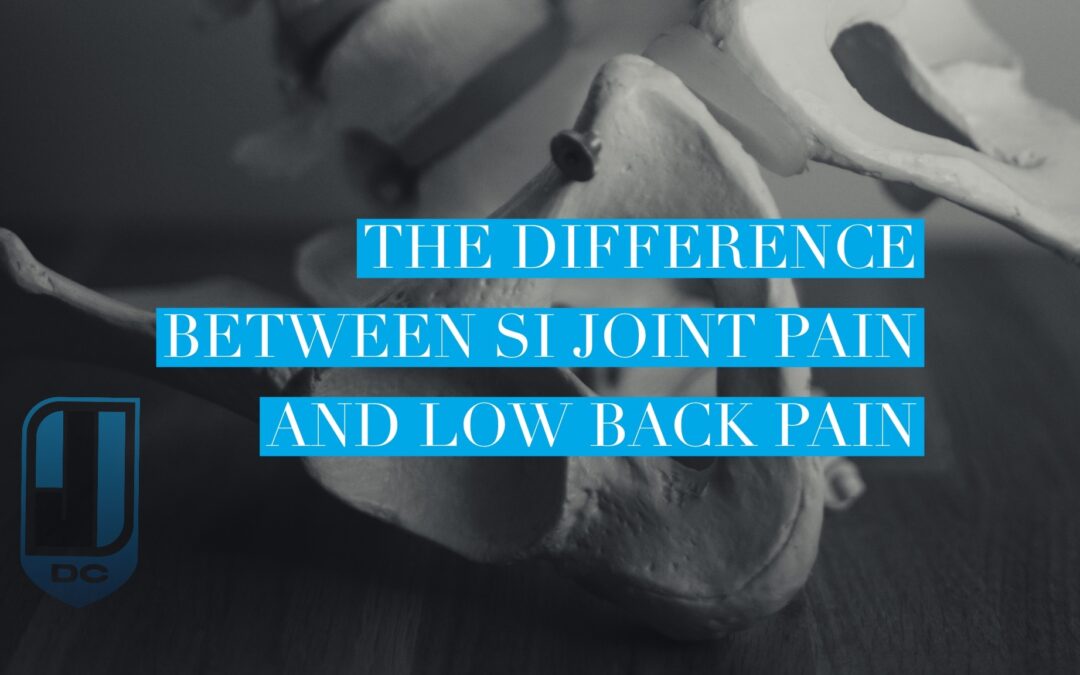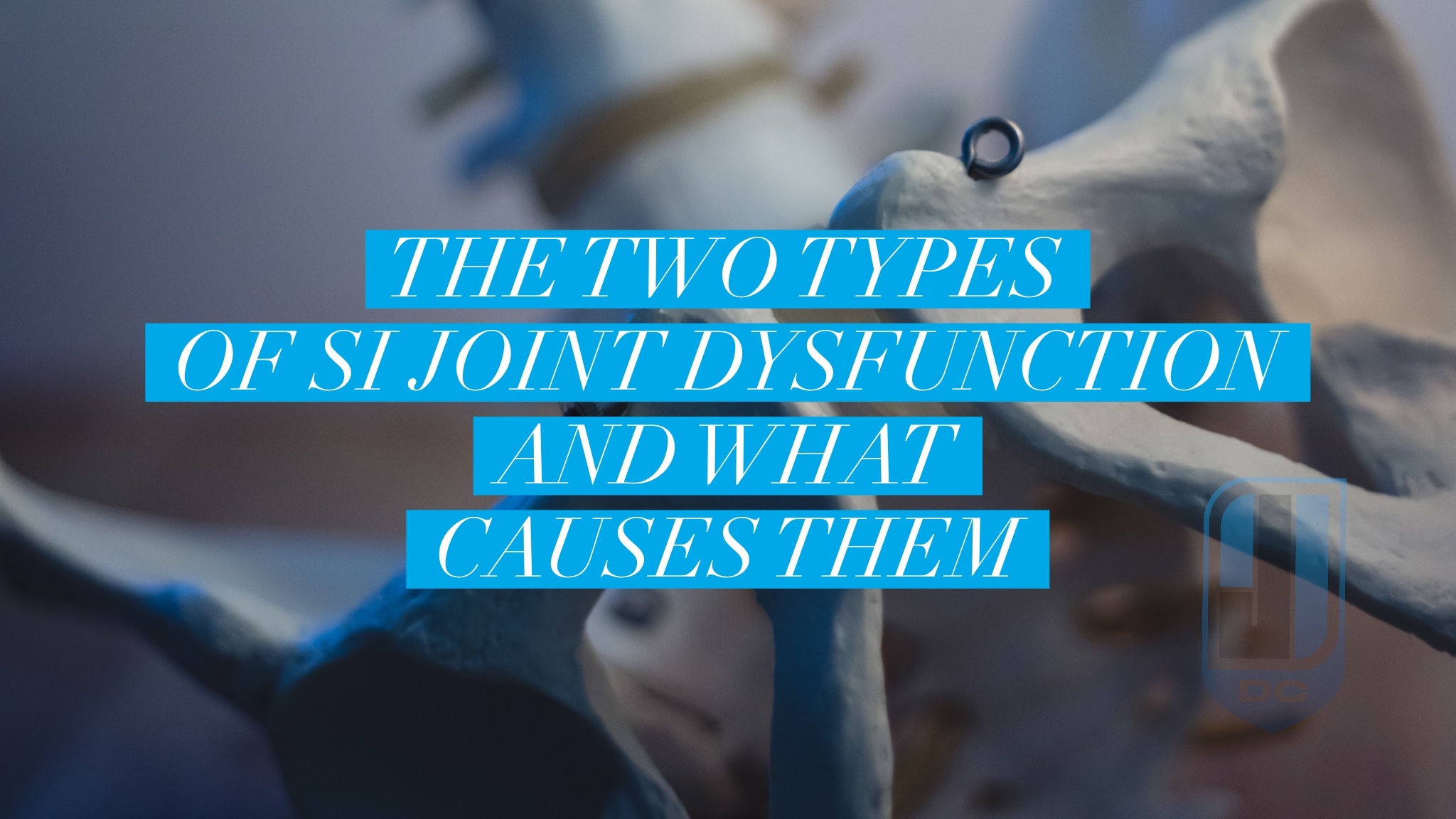It can be difficult to tell the difference between SI joint pain and low back pain. Thankfully, there are differences between SI joint pain and low back pain conditions. If you know what to look for you can figure out with some confidence if your pain is coming from you SI joint or your low back.
In this post I’ll show you some keys to figuring out if you have SI joint pain or low back pain. Once you know if your SI joint is causing your pain or if it’s your low back, it’s easier to find the right treatment. There are many treatments for both SI joint pain and low back pain that are effective at providing relief.
At the end I’ll explain treatments for SI joint pain and treatments for low back pain relief. As always, if you have any questions feel free to reach out and I’ll do my best to answer them!
The Difference Between SI Joint Pain and Low Back Pain
The best way to tell the difference between SI joint pain and low back pain is by looking at their unique symptoms. There are always exceptions, but here are how SI joint pain and low back pain differ:
- SI joint pain does not produce pain, tingling, or numbness below the knee. This is a common symptom called sciatica that comes with low back pain.
- Pain from the SI joint will not improve with prone press up exercises. Many times, these exercises will give some relief with low back pain.
- Leg weakness and loss of deep tendon reflexes are not signs of SI joint dysfunction. These sometimes appear in cases of more severe low back pain.
- Laying on your back and lifting your straight leg upwards will not cause shooting pain down to the foot. A straight leg test that produces pain to the foot is more commonly a low back pain complaint.
- When the SI joint feels stuck and like it’s not moving, this is a symptom of SI joint pain. Low back pain is typically more painful in the lumbar spine and the low back feels stuck.
These are the major ways SI joint pain and low back pain are different. They won’t be true of every case but are generally true differentiating factors. Ultimately, how to figure out if you have SI joint dysfunction or low back pain relies on seeing an expert, like a chiropractor, who sees these conditions frequently.
If you think you have SI joint pain, check out this post. SI joint pain is often caused by a condition called SI joint dysfunction. There are two types of SI joint dysfunction that cause SI joint pain and SI joint dysfunction, you can read about there here.
Is SI Joint Pain or Low Back Pain More Common?
Is SI joint pain or low back pain more common? Answering this question can help you figure out if you have SI joint pain or low back pain. Here’s the answer, and it may surprise you:
90% of pain centered around the SI joint is coming from the low back and not primarily the SI joint.
That means if assumed SI joint pain was always a problem with the SI joint, we would miss 90% of the low back pain that’s causing it. Unfortunately, low back pain can be sneaky and refer pain from a problematic low back to the SI joint. This may trick you into thinking you have an SI joint problem when it’s really a low back problem.
Safe Treatments for SI Joint Pain and Low Back Pain
The great news is that there are safe treatments for SI joint pain and low back pain. In fact, the treatments for those conditions are the same but vary in how and where they’re used. Chiropractors are experts at treating low back pain and SI joint pain. So much so, that they spend most of their days treating patients with these conditions. Chiropractic treatment for SI joint pain and low back pain includes (or may include):
- Stretches to improve muscle flexibility.
- Exercises to activate underactive muscles and strengthen weak muscles.
- Drills to improve motor control and stability
- Manipulation and mobilization to relieve pain and restore normal joint function. (See this video!)
- Soft tissue mobilization to reduce tightness and knots in the muscles.
- Dry needling to reduce painful knots and trigger points.
- Acupuncture to restore balance, calm down the nervous system, and relieve pain.
Chiropractic care is an excellent choice for SI joint pain and low back pain. Not only is it the right choice, but it’s safe. You can feel comfortable knowing that chiropractors are experts of the spine including SI joint pain and low back pain.

Jason Williams DC is a licensed Doctor of Chiropractic with Physical Therapy Modality and Acupuncture privileges. He is a chiropractor in Dumfries, VA at Sentara Therapy Center. Dr. Williams’ clinical expertise is in the evaluation, treatment, and rehabilitation of neuro-musculoskeletal conditions. Specific focuses include spinal, extremity, and sports-related complaints. He brings a patient-first attitude to his treatments and is a proponent of evidence-based and integrative care. See more content and his contact info here.
The opinions and views are mine personally, and do not necessarily reflect the views of others in the profession, my employer, or organizations that I belong to.


